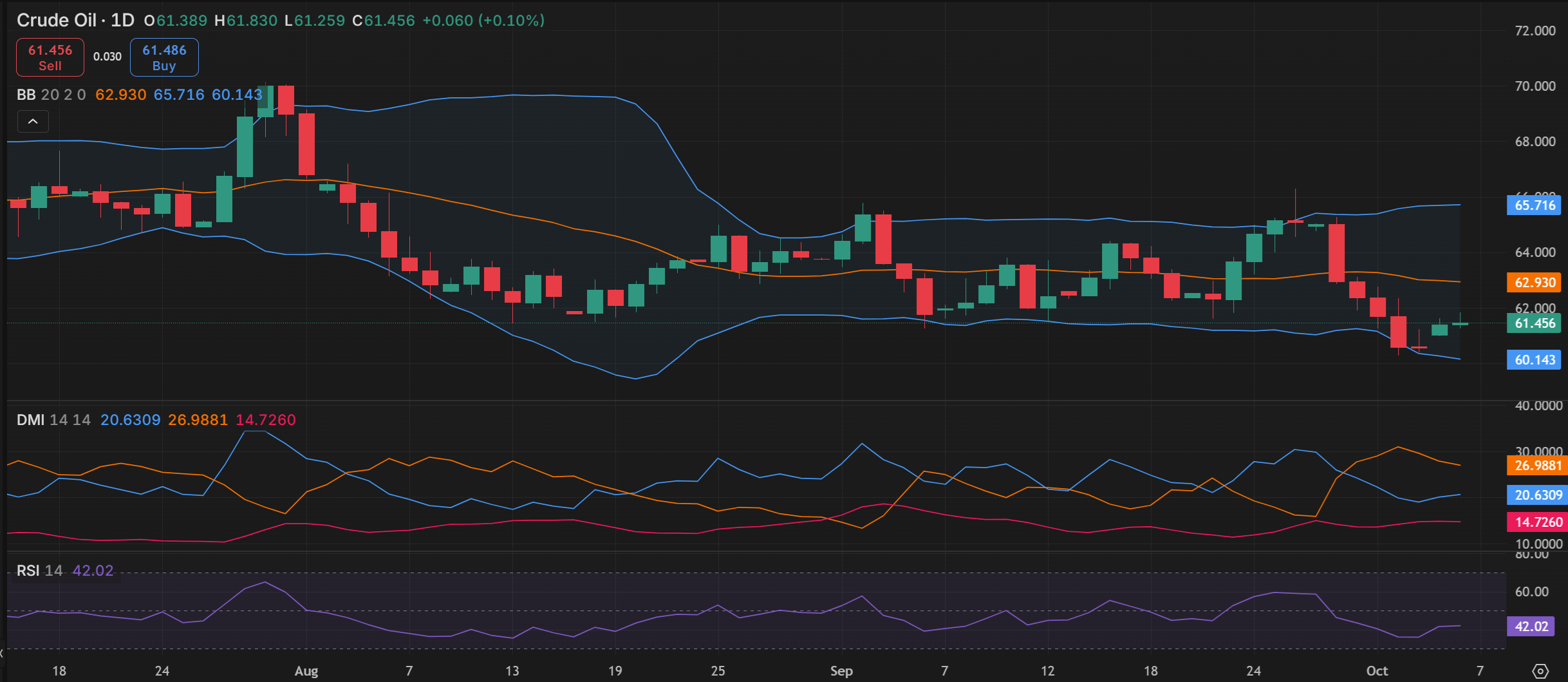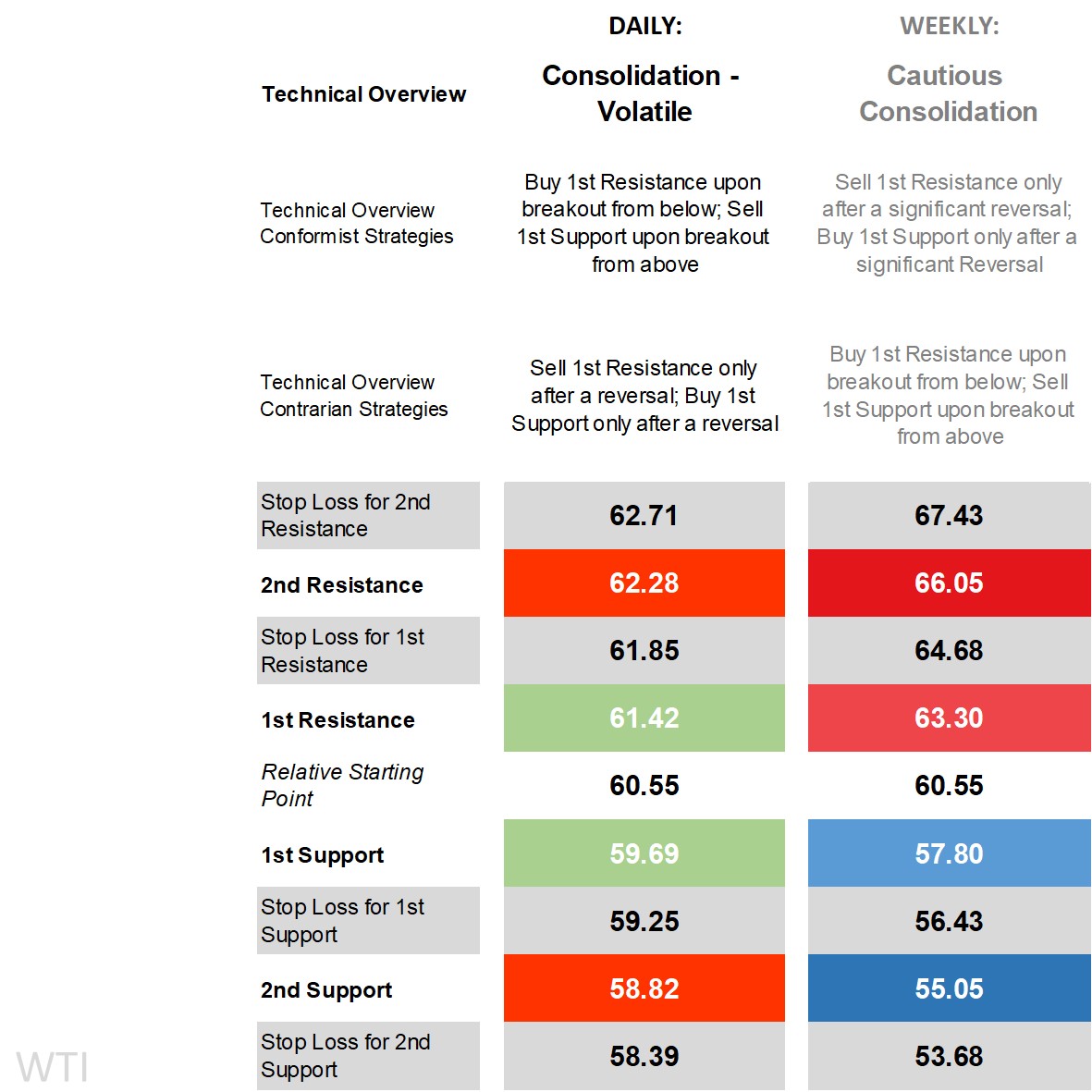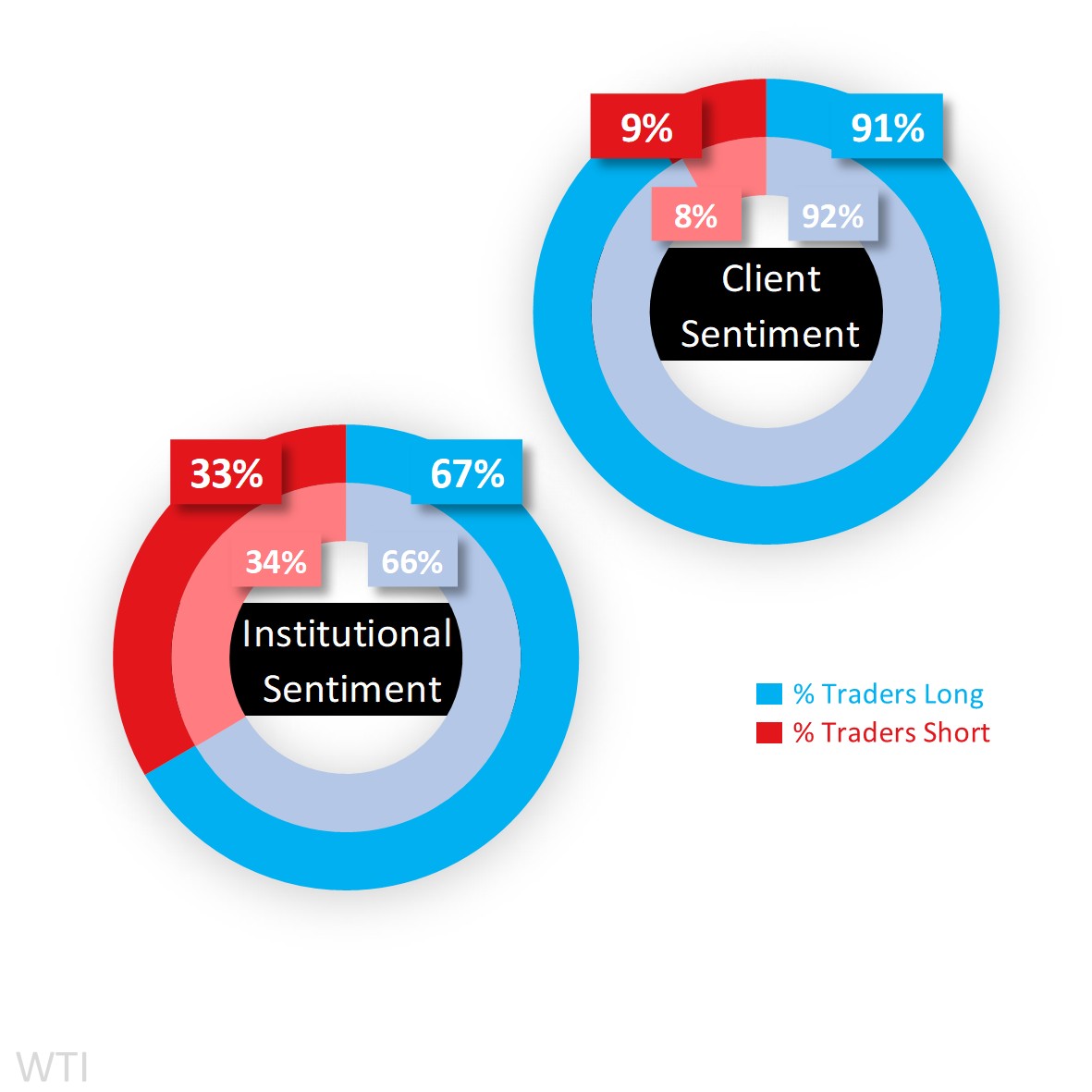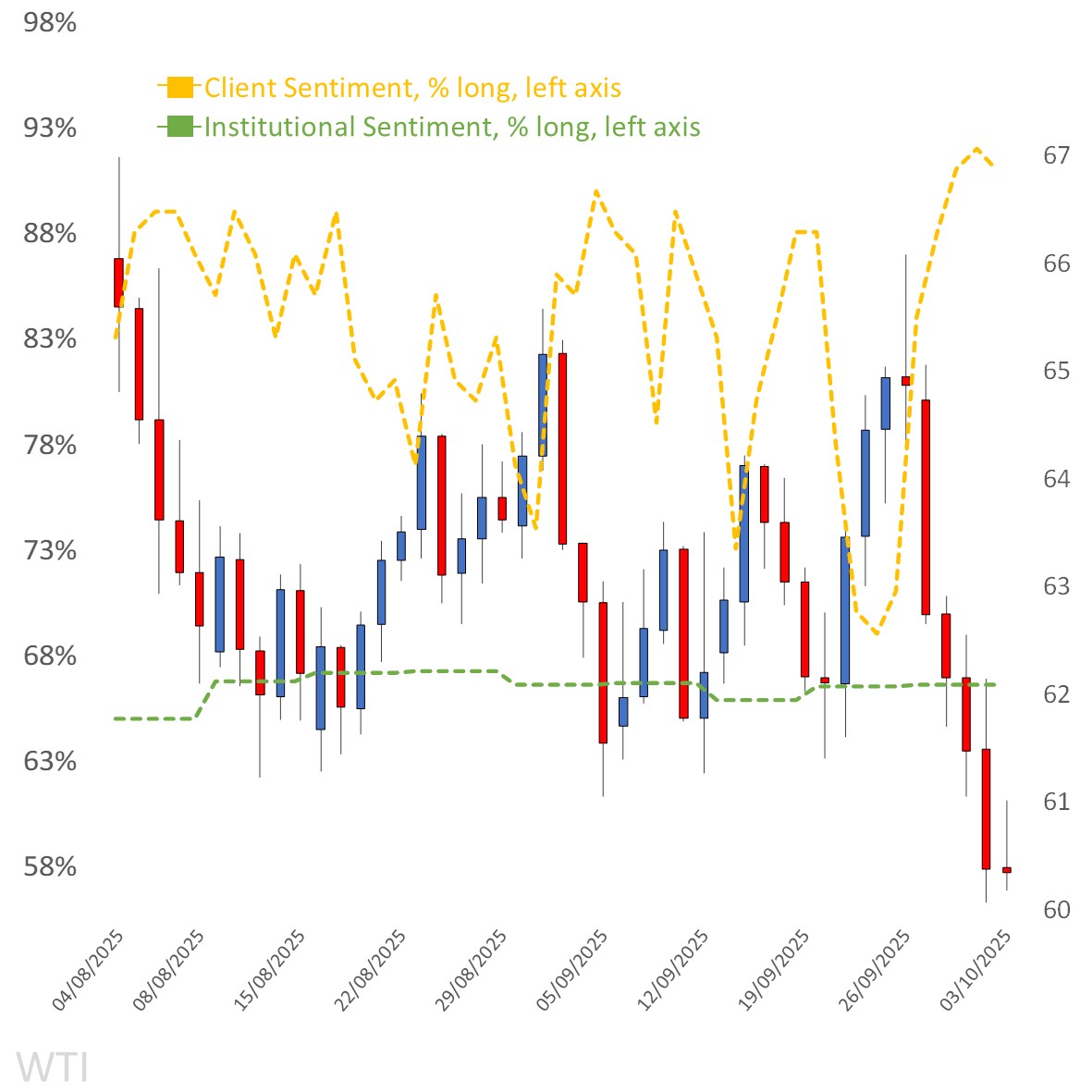Trading WTI After the OPEC+ Decision
Gaps into the $61s but yet to truly disrupt what have been bearish technicals, and in sentiment it’s very much a story of majority buy bias.
It’s been a busy morning for the financial markets after record highs for key US equity indices last week, with Asia this morning seeing massive gains for Japan’s Nikkei 225 (+4.8%) enjoying a record high after the ruling LDP party chose pro-stimulus Takaichi as its leader raising chances she’ll become Japan’s next prime minister, while in Europe the CAC 40 (-1.5%) went for a dive after French PM Lecornu resigned.
That has taken the attention away from the commodities market a bit, but there’s no denying gold’s record high and silver tracking it enjoying similar percentage gains keeping the shine on precious metals and traders look for the debasement trade. Where has that left oil? Gapping higher thanks to the weekend OPEC+ decision to raise November’s output by 137K bpd (barrels per day). An increase in output is a bearish factor, but given expectations prior to the event were for a larger increase emanating from unconfirmed reports has given the energy commodity a small push higher this morning into the $61s.
In all, oil prices have failed to offer the climb witnessed in other key asset classes, left to rely on worries over demand factors including the government shutdown that doesn’t look like it’ll end soon raising the likelihoods of mass firings, and what has generally been disappointing data. US ISM (Institute for Supply Management) services PMI (Purchasing Managers’ Index) in September dropped from (an expansionary) 52 to (a flat) 50 and well below forecast, its employment component improving to 47.2 though still in job-loss territory, new orders plunging from 56 to 50.4, and prices paid rising to 69.4 as stagflationary fears spread from the manufacturing sector to services. Services PMIs were also a miss for the Eurozone and UK.
In terms of central bank members speaking, there was the Federal Reserve’s (Fed) Williams that robust policy works to anchor inflation expectations, Logan on the tariffs that have been contributing to inflation and is worried about elevated non-housing services inflation, Jefferson that the central bank has enough information to do its job and that the labor market could face stress without support, Goolsbee that the Chicago Fed employment measure is tracking the unemployment rate at 4.3% and is “a little wary about front-loading too many rate cuts”, and Miran that their policy ought to be forward looking and hopes they’ll have the data they need by their next FOMC meeting.
Week ahead
As for today, low-impacting items out of the US in terms of data keeping the attention on the Senate vote to see if the government shutdown will end, with several FOMC (Federal Open Market Committee) members speaking tomorrow before minutes from their latest FOMC meeting releases on Wednesday. Fed Chairman Powell speaks on Thursday where the weekly claims might be delayed again if the shutdown persists, and UoM’s preliminary consumer sentiment and inflation expectations are on Friday. Traders will also be noting any upcoming agreements (or lack thereof) in the Middle East, as well as factors elsewhere that might contribute to tilting the risk premium on energy prices.
WTI’s technical overview, strategies and levels
Looking at the daily time frame and price is below most of its main moving averages (MA), climbing off the lower end of the Bollinger Band after reaching it last Friday, on the DMI (Directional Movement Index) front the -DI over the +DI keeping it ‘negative’ by at least one calculation, an RSI (Relative Strength Index) closer to the middle after briefly nearing oversold territory, and an ADX (Average Directional Movement Index) far from trending territory. It’s the breaches below key support levels combined with fundamental events that have kept the overview more ‘consolidation – volatile’ than ‘consolidation with negative bias’ as there’s no denying it exists in the shorter term when looking at technicals.
That puts breakout strategies in the conformist camp on the strategic front for those who expect the uptick in volatility to persist noting that absent any updates will see a shift in its daily technical overview soon, while those seeing price action more contained siding with contrarians armed with reversal strategies be it via sell-after-reversals off the 1st Resistance or buy-after-reversals off the 1st Support levels. It has already breached today’s 1st Resistance giving conformist buy-breakouts the (initial) edge.
Zooming out to the weekly time frame and while the technicals aren’t optimistic, it’s a more cautious overview labeled as ‘cautious consolidation’ where the script is reversed when working off of what are wider levels with conformists going for significant reversals off the 1st levels waiting for the levels to break first and only going with a move back to the Relative Starting Point if prices retrace back, while breakouts are in the contrarian camp.
Capital.com’s client sentiment for WTI
It’s been majority buy sentiment for Capital.com’s clients for months with much of it in extreme long territory given WTI’s price decline over the past months causing shorts to close out and longs to hold and initiate, but it’s at staggeringly high levels historically reaching 91% at the start of this week compared to a heavy long 71% at the start of last week.
We don’t have the latest figures out of the CFTC for the CoT (Commitment of Traders) report due to its delay following the government shutdown, but the readings from the week before show heavy buy sentiment reaching 67% according to one of the key energy contracts.
Client sentiment mapped on the daily chart
Source: Capital.com
Period: AUGUST 2025 – OCTOBER 2025
Past performance is not an indicator of future results.
WTI’s chart on Capital.com’s platform with key technical indicators

Source: Capital.com
Period: JULY 2025 – OCTOBER 2025
Past performance is not an indicator of future results


